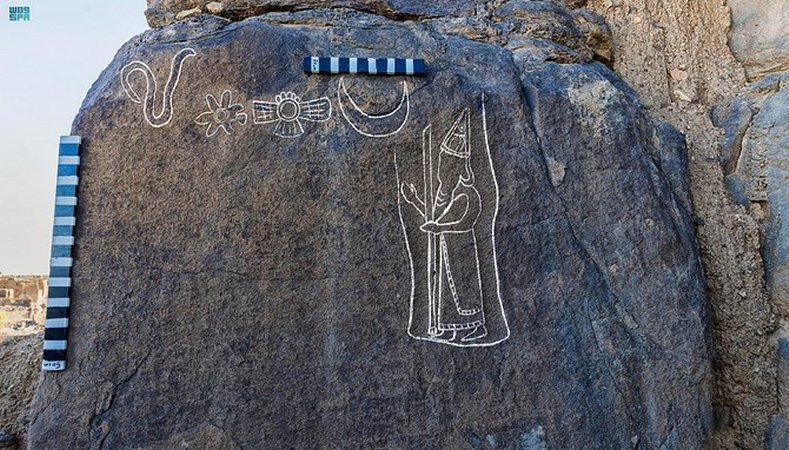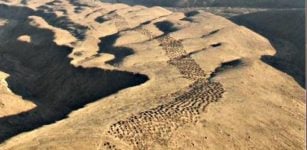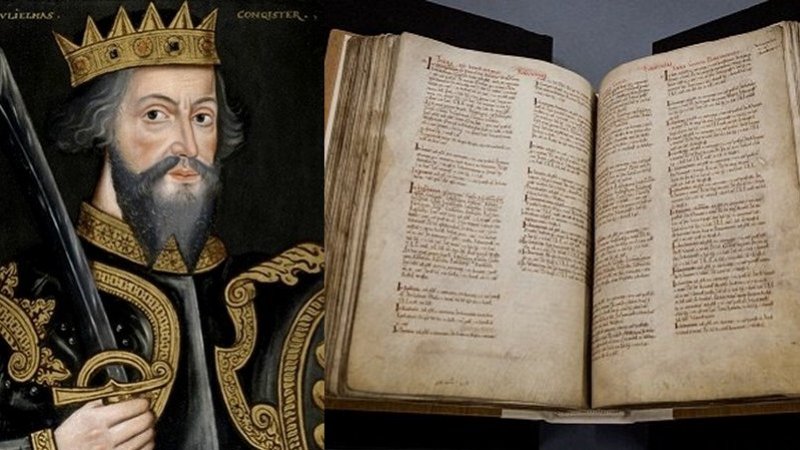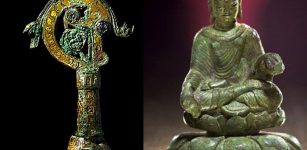Ancient Inscriptions Of Babylonian King Nabonidus Discovered In Saudi Arabia
Jan Bartek – MessageToEagle.com – Archaeologists from the Saudi Heritage Commission have discovered fascinating rock inscriptions in the Hail region (northern Saudi Arabia) that depict the Babylonian King Nabonidus.
The rock inscriptions date as far back as 540 B.C and provide further evidence there was a cultural link between Saudi Arabia and most of the ancient Near East civilizations.
King Nabonidus was the last king of the Neo-Babylonian Empire. He ruled from 556 BC until the fall of Babylon to the Achaemenid Empire under Cyrus the Great in 539 BC.
The finding includes an inscription on one of the basalt rocks depicting the Babylonian king Nabonidus holding a scepter in his hand. Credit: SPA
“Nabonidus, the last native Babylonian king, raised their capital to a condition of magnificence it had not known before. This city survived, with but little change, during the domination of the Achæmenian kings of Persia, and from the time of Herodotus onward Babylon was made famous throughout the ancient world. At that time Ashur and Nineveh, the great capitals of Assyria, had ceased to exist; but Babylon was still in her glory, and descriptions of the city have come down to us in the works of classical writers.” 1
When Cyrus the Great invaded Babylon, King Nabonidus was taken into captivity and the capital had to surrender. Before the invasion of the Achaemenid Empire, King Nabonidus “had collected many of the cult-images throughout the country into the capital, little recking that he thereby tore the gods from their ancient habitations.” 1
Cyrus the Great gained the Babylonians’ respect by restoring the gods to their local shrines, Cyrus gained in popularity, and completely won over the priesthood, by far the most powerful political section of the community. Thus it happened that Babylon made no further struggle to retain her freedom, and the whole of the territory she had enjoyed was incorporated without resistance in the Persian empire.” 1
The Harran Stela depicting King Nabonidus praying to the moon (i.e. Sîn), the sun and Venus. Credit: Jona Lendering – CC BY 3.0
According to the Arab News, the ancient Babylonian rock inscriptions discovered in Saudi Arabia depict “the Babylonian king holding a scepter in his hand, and in front of him are a number of religious symbols. The inscription also contained a cuneiform text with around 26 lines, making it the longest written text found so far in the Kingdom.”
At present there is little information about the findings as scientists must now examine the rock inscriptions and compare them with other similar findings made in the neighboring area.
See also: More Archaeology News
The site of the wall where the Babylonian inscriptions were discovered was “known in the past as Fadak, represents an important site in northwestern Arabia from the first millennium B.C. until the early Islamic era. A group of drawings, rock inscriptions, and early Islamic writings were found on the sides of its mountains. The site also contains a set of castles, forts, and walls, along with water facilities that give another dimension to its cultural importance.” 2
It is a significant archaeological discovery that will provide valuable historical information about the cultural and commercial contact between the Arabian Peninsula and the Mesopotamian civilizations.
Written by Jan Bartek – MessageToEagle.com – AncientPages.com Staff Writer
Expand for references











